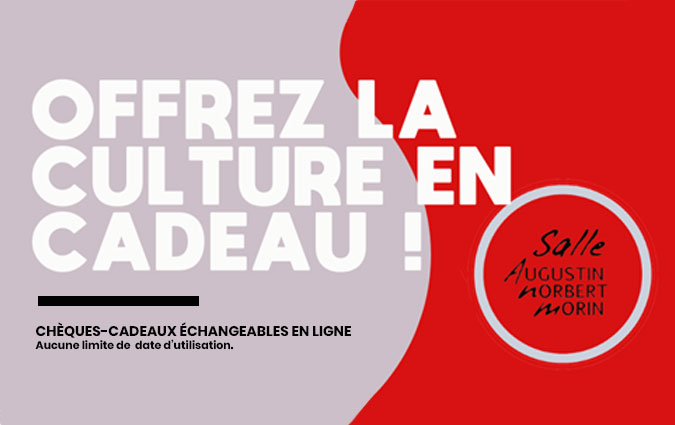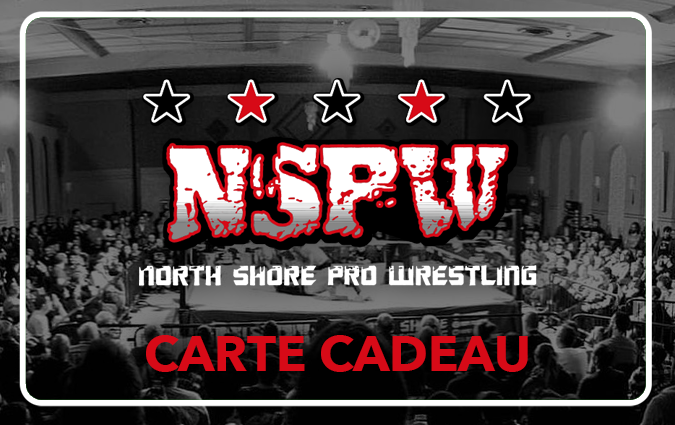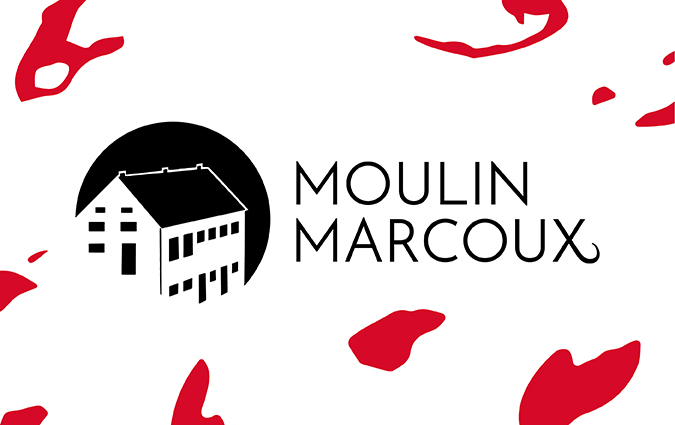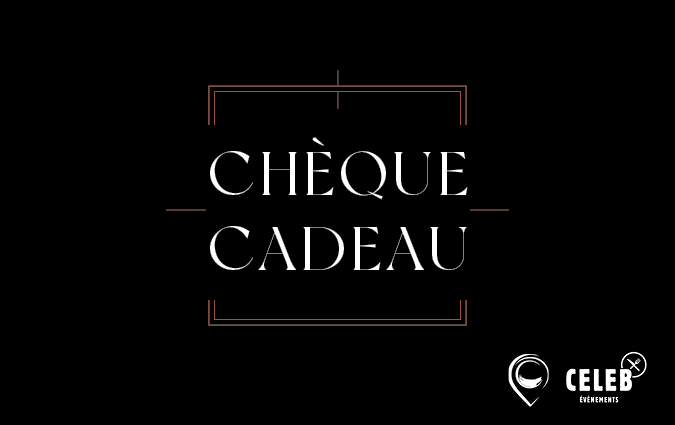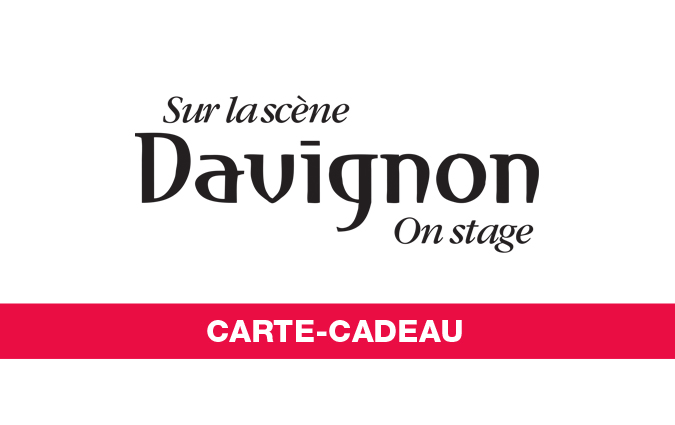
Orchestre National de Jazz (de France)
Share this event
For more info about this event, please contact the event organizer, L'OFF Festival de Jazz de Montréal, at loffjazz.production@gmail.com.
Buy Tickets
Série Grands Concerts
ORCHESTRE NATIONAL DE JAZZ (DE FRANCE) présentent EX MACHINA par Steve Lehman et Frédéric Maurin
Conçu par les compositeur et saxophoniste américain Steve Lehman et Frédéric Maurin, en étroite collaboration avec l’Ircam, Ex Machina explore des directions musicales inédites, en développant les interactions en temps réels entre les solistes et la machine au sein d’un grand ensemble de jazz. Ces deux musiciens partagent, en effet, nombre de problématiques esthétiques et d’ambitions qui les ont amenés à emprunter des cheminements comparables dans leurs ensembles respectifs.
Leur ambition à dépasser les limites traditionnelles de l’orchestre les a ainsi conduits à développer un fort intérêt pour les théories de la musique spectrale, courant incarné en particulier par les compositeurs français Gérard Grisey et Tristan Murail dont Steve Lehman fut l’étudiant à l’université Columbia à New York.
Fruit d’un travail avec l'équipe Représentations musicales de l'Ircam dirigée par Gérard Assayag, Ex Machina intègre des dispositifs créés à partir de l'environnement DYCI2 par Jérôme Nika dans le processus de composition et dans les improvisations des solistes en temps réel, l'ordinateur devenant, tour à tour, un générateur d'orchestrations électroniques pour les compositeurs et un partenaire d'improvisation pour les musiciennes et musiciens.
Présenté en février 2022 au 32e Festival Présences de Radio France puis au Bimhuis à Amsterdam, ce programme, qui accueille également deux complices de Steve Lehman, le trompettiste Jonathan Finlayson et le vibraphoniste Chris Dingman, propose un voyage dans des paysages sonores inouïs, pensé avec un musicien emblématique de ce que le jazz actuel a de plus vif et de plus audacieux à offrir.
Avec le soutien du Conseil Européen de la Recherche dans le cadre du projet ERC REACH mené à l’Ircam-STMS, du Centre national de la musique et de la Sacem.
-
(english follows) / (version complète présentation)
E X MACHINA NOUVEAU PROGRAMME CRÉATION 2022
Après Dancing in Your Head(s) et Rituels, l’Orchestre National de Jazz présente Ex Machina. Ce nouveau programme, conçu par Steve Lehman et Frédéric Maurin, en étroite collaboration avec des chercheurs affiliés à l’Ircam, explore des directions musicales inédites, en favorisant la rencontre entre musique improvisée par un orchestre de jazz et composition assistée par ordinateur.
Le processus de création s’articule autour de l’interaction musicale homme-machine, à l’heure où l’intelligence artificielle devient particulièrement inventive, cette aventure artistique de l’ONJ révèle de nouvelles pratiques, de nouveaux usages dans le champ de l’improvisation et de l’écriture pour grand ensemble de jazz, afin d’établir une connexion entre l'humain et la machine, et de l’intégrer comme un instrument qui viendrait augmenter l'orchestre.
La composition assistée par ordinateur devient un instrument au service de la performance. Avec ce programme, décliné en deux parties, l’une écrite par Steve Lehman, l’autre par Frédéric Maurin, l’ONJ propose aux auditeurs une expérience immersive musicale, sonore et visuelle à nulle autre pareille.
UNE COLLABORATION ARTISTIQUE
S’il est des collaborations artistiques qui font sens, celle initiée par Frédéric Maurin au sein de l’Orchestre National de Jazz à destination de Steve Lehman en fait partie. Ces deux musiciens partagent, en effet, nombre de problématiques esthétiques et d’ambitions qui les ont amenés à emprunter des cheminements comparables, l’un, avec Ping Machine, l’autre, à la tête de son Octet. Tous deux ont proposé des répertoires largement salués pour l’inventivité de leurs formes, la sophistication de leur palette timbrale et l’élaboration de schémas de jeux articulant de manière singulière la part du soliste à la construction des œuvres.
Leur ambition à dépasser les limites traditionnelles de l’orchestre les a ainsi conduits à développer, notamment, un fort intérêt pour les théories de la musique spectrale — courant incarné en particulier par les compositeurs français Gérard Grisey et Tristan Murail (dont Steve Lehman fut l’étudiant à l’université Columbia à New York). Basé sur la décomposition du son musical, ce mouvement esthétique a permis l’émergence de nouveaux principes compositionnels et de techniques d’orchestration, notamment microtonales, qui favorisent une perception fusionnée des timbres et bouleversent l’impression qui peut se dégager d’une œuvre orchestrale.
Formé sous la tutelle de Jackie McLean (disciple parmi les plus aventureux de Charlie Parker et grand prophète du blues), Steve Lehman s’ancre, en parallèle, résolument dans le jazz, marqué également par les théories de deux grandes figures singulières de la Great Black Music apparues dans le sillage du free, Anthony Braxton et George Lewis. Aux côtés d’artistes aventureux tels que le pianiste Vijay Iyer et le batteur Tyshawn Sorey, Lehman s’est affirmé, au sein d’une génération, également attirée par l’orbite du M-Base, qui se fait fort de maintenir le jazz comme espace d’expérimentation et d’exigence intellectuelle. En tant que saxophoniste, Lehman s’affirme comme un soliste saisissant, tant par la densité de sa sonorité que le caractère affûté de son phrasé, qui l’inscrivent dans une lignée de pionniers de l’alto, d’Eric Dolphy à Steve Coleman en passant par Julius Hemphill et Greg Osby.
Pour Frédéric Maurin, ce projet est également une opportunité de travailler sur un format d’orchestre augmenté, qui intègre une part de processus génératifs et d’interaction en temps réel grâce aux logiciels mis au point par l’Ircam, coproducteur de cette création. « Plutôt que de chercher à reproduire ce que fait déjà l’humain, je préfère donner à la machine des choses que l’humain ne peut pas faire, comme gérer des spectres harmoniques en interaction avec un soliste », précise Frédéric Maurin. Il voit dans le recours à l’intelligence artificielle appliquée à la musique une opportunité d’enrichir les scénarios d’improvisation, d’élargir la palette des possibles et d’interroger le mystère des sources de l’émotion musicale, en invitant le public à un voyage dans des confins sonores inédits, pensé et développé avec un grand artiste emblématique de ce que le jazz actuel a de plus vif et de plus audacieux à offrir.
UN PARTENARIAT AVEC L’IRCAM
Ayant en commun depuis plusieurs années la nécessité de developper de nouveaux outils numériques qui puissent répondre à leurs besoins artistiques, Frédéric Maurin et Steve Lehman ont souhaité concevoir Ex Machina avec l’Ircam, en particulier avec Gérard Assayag, responsable de l’équipe Représentations musicales qu’il a fondée en 1992 et qui depuis a constamment été déterminante dans la définition des axes de recherche musicale de l’institut, et avec Jérôme Nika, membre de l’équipe, chercheur, concepteur et musicien d’informatique musicale spécialisée dans l’interaction musicale homme-machine.
Des phases de travail, réunissant les deux compositeurs et les deux chercheurs auront lieu en amont de la création et des répétitions avec l’orchestre pour permettre de travailler sur les différents procédés assistés par ordinateurs, impliqués dans le programme.
Durée : 1h20
Production déléguée Orchestre National de Jazz
Coproduction Ircam-Centre Pompidou
Commande de l’Ircam – Centre Pompidou et de l’Orchestre National de Jazz
Avec le soutien du Conseil Européen de la Recherche dans le cadre du projet ERC REACH mené à l’Ircam-STMS. Avec l’aide du Centre National de la Musique et de la Sacem.
E X MACHINA NOUVEAU PROGRAMME
CRÉATION 2022
DISTRIBUTION
STEVE LEHMAN ET FRÉDÉRIC MAURIN COMPOSITIONS
FANNY MÉNÉGOZ FLÛTE, FLÛTE ALTO, PICCOLO
CATHERINE DELAUNAY CLARINETTE, COR DE BASSET
STEVE LEHMAN SAXOPHONE ALTO
JULIEN SORO SAXOPHONES TÉNOR ET SOPRANO, CLARINETTE
FABIEN DEBELLEFONTAINE SAXOPHONE BARYTON, CLARINETTE, FLÛTE JONATHAN FINLAYSON TROMPETTE
FABIEN NORBERT TROMPETTE
DANIEL ZIMMERMANN TROMBONE
CHRISTIANE BOPP TROMBONE
FANNY METEIER TUBA
CHRIS DINGMAN VIBRAPHONE
STÉPHAN CARACCI MARIMBA, VIBRAPHONE, GLOCKENSPIEL
BRUNO RUDER PIANO
SARAH MURCIA CONTREBASSE
RAFAËL KOERNER BATTERIE
JÉRÔME NIKA CONCEPTION DE L’ÉLECTRONIQUE GÉNÉRATIVE ET COLLABORATION ARTISTIQUE DIONYSIOS PAPANICOLAOU RÉALISATION INFORMATIQUE MUSICALE IRCAM
FRÉDÉRIC MAURIN DIRECTION
ERWAN BOULAY ET GUILLAUME JAY SON
GÉRARD ASSAYAG COLLABORATION SCIENTIFIQUE IRCAM-STMS (ÉQUIPE REPRÉSENTATIONS MUSICALES)
CALENDRIER
PREMIERE • 11 FÉVRIER 2022
FESTIVAL PRÉSENCES RADIO FRANCE / PARIS
12 FÉVRIER 2022
BIMHUIS / AMSTERDAM
25 AOÛT 2022 (TBC)
SUMER JAZZ ACADEMY / LODZ
30 SEPTEMBRE 2022 (EN TOURNÉE JUSQU’AU 9 OCTOBRE)
FORUM IRCAM, NATIONAL SAWDUST / NEW YORK CITY 3 FÉVRIER 2023 (TBC)
THÉÂTRE DE SAINT-QUENTIN EN YVELINES
EN TOURNÉE
AOÛT 2022 • OCTOBRE 2022 • NOVEMBRE 2022 FÉVRIER 2023 • MAI 2023 • NOVEMBRE 2023
-
EX MACHINA NEW PROGRAMME CREATION 2022 After Dancing in Your Head(s) and Rituels, the Orchestre National de Jazz ONJ presents Ex Machina, the new programme conceived by Steve Lehman and Frédéric Maurin in close collaboration with researchers attached to IRCAM. Ex Machina explores brand new directions in music, encouraging the encounter between improvised music, played by a jazz orchestra, and computer-assisted music composition. The creative process centres around the musical interaction between man and machine at a time when artificial intelligence is becoming particularly inventive. This new artistic adventure with the ONJ reveals new practises and new customs in the field of improvisation and composing for a large jazz ensemble so as to establish a connection between humans and machines, and integrate this as if it was another instrument come to enhance the orchestra. Computer-assisted music composition here becomes an instrument that serves performance. With this programme divided into two parts, one written by Steve Lehman and the other by Frédéric Maurin, the ONJ allows listeners to experience an audiovisual immersion in music and sound that is unlike any other. AN ARTISTIC COLLABORATION In a world of artistic collaborations that make sense, the one that Frédéric Maurin initiated for the ONJ with Steve Lehman definitely belongs. In fact, both musicians share a number of aesthetic questions and ambitions that make it possible to compare their respective careers: Maurin with Ping Machine, and the latter when fronting his Octet. Both have proposed material that has been widely praised as music that has inventive forms, with sophistication in its palettes of timbres, and elaborate patterns in which the music can be played, notably the manner in which the soloist integrates into the construction of the different pieces they have written. Their shared ambition to go beyond traditional orchestral limits has particularly fostered their strong interest in the theories of spectral music, a contemporary practice notably represented by such French composers as Gérard Grisey and Tristan Murail (under whom Steve Lehman studied at New York’s Columbia University). Based on the decomposition of the music’s acoustic properties, spectral music has allowed the emergence of new composing principles and orchestration techniques, notably in microtonal compositions that favour merged perceptions of the timbres, revolutionising the impressions that can emanate from orchestral works. Trained under the supervision of Jackie McLean – one of the most adventurous disciples of Charlie Parker and a great blues prophet – Steve Lehman has roots that are decidedly jazz, in parallel with influences he has drawn from the theories of two major, exceptional figures in the Great Black Music that appeared in the wake of free jazz: Anthony Braxton and George Lewis. Alongside such adventurous artists as pianist Vijay Iyer and drummer Tyshawn Sorey, Steve Lehman imposed his presence in a generation also drawn into the M-Base orbit, which took pride in maintaining jazz as a space for experiment and intellectual rigour. And as a saxophonist, Lehman has become a striking soloist, both in the density of his sound and in the incisive character of his phrasing, qualities that place him in the tradition of alto pioneers from Eric Dolphy to Steve Coleman, including Julius Hemphill and Greg Osby. For Frédéric Maurin, the Ex Machina project is also an opportunity to work with an augmented-orchestra format, one that integrates generative and interactive processes in real time thanks to software developed by IRCAM, which coproduced this new work. “Rather than try and reproduce what humans can do already,” says Frédéric Maurin, “I prefer to give machines the things that humans can’t do, like managing a harmonic spectrum in interaction with a soloist.” In this recourse to artificial intelligence in music, Maurin sees opportunities for enhancing scenarios for improvisation, broadening the palette of possibles, and addressing the issue of the mystery that lies behind the sources of musical emotion: it is an invitation to the public to embark on a voyage into extraordinary new acoustical confines, a journey conceived and developed in close collaboration with a great artist, an emblematic figure representing the cutting edge of what the most audacious jazz of today has to offer. A PARTNERSHIP WITH IRCAM For several years now, Frédéric Maurin and Steve Lehman have had a common need for development of new digital tools that answer their artistic requirements. Maurin and Lehman wanted to develop the concept of Ex Machina in partnership with Ircam and, in particular, Gérard Assayag – the man in charge of the “Musical Performances” team he founded in 1992, and who has been decisive ever since in defining the Ircam Institute’s lines of research — and Jérôme Nika, a member of the team and a researcher, designer and musician in the computer-assisted field specializing in man-machine interactivity in music. Work-sessions in different phases involving Maurin and Lehman with the two above researchers will be set up, together with rehearsals with the orchestra, so as to allow everyone to become familiar with the computer-assisted procedures involved in the new ONJ programme. Duration : 1h20 Production Orchestre National de Jazz. Coproduction Ircam-Centre Pompidou. Commissioned by Ircam, the Centre Pompidou and the Orchestre National de Jazz ONJ. With backing from the European Union’s “Horizon 2020” programme in the context of the Ircam-STMS project ERC REACH. With the support of Centre National de la Musique - CNM. E
X MACHINA NEW PROGRAMME CREATION 2022 LINE-UP STEVE LEHMAN ET FRÉDÉRIC MAURIN COMPOSITIONS FANNY MÉNÉGOZ FLUTE, ALTO FLUTE, PICCOLO CATHERINE DELAUNAY CLARINET, BASSET HORN STEVE LEHMAN ALTO SAXOPHONE JULIEN SORO TENOR & SOPRANO SAXOPHONES, CLARINET FABIEN DEBELLEFONTAINE BARITONE SAXOPHONE, CLARINET, FLUTE JONATHAN FINLAYSON TRUMPET FABIEN NORBERT TRUMPET DANIEL ZIMMERMANN TROMBONE CHRISTIANE BOPP TROMBONE FANNY METEIER TUBA CHRIS DINGMAN VIBRAPHONE STÉPHAN CARACCI MARIMBA, VIBRAPHONE, GLOCKENSPIEL, PERCUSSIONS BRUNO RUDER PIANO SARAH MURCIA DOUBLE BASS RAFAËL KOERNER DRUMS DIONYSIOS PAPANICOLAOU COMPUTER MUSIC PRODUCTION IRCAM JÉRÔME NIKA RESEARCHER FRÉDÉRIC MAURIN DIRECTION ERWAN BOULAY & GUILLAUME JAY SOUND LESLIE DESVIGNES LIGHTS GÉRARD ASSAYAG SCIENTIFIC COLLABORATION IRCAM-STMS (Music Representations Team) CALENDAR 11th FEBRUARY 2022 - PREMIERE Studio 104, Festival Présences / Radio France, Paris 12nd FEBRUARY 2022 BIMHUIS / AMSTERDAM 30th SEPTEMBER 2022 - 6th NOVEMBER 2022 - NORTH AMERICA TOUR National Sawdust, New York City / Princeton University / Arsnova Workshop, Princeton / OFF Jazz Festival de Montréal
6th JUNE 2023 Festival Jazzdor Berlin / Kesselhaus in der Kulturbrauerei, Berlin 10th NOVEMBER Festival Jazzdor Strasbourg / Cité de la Musique et de la Danse, Strasbourg
*svp vérifier auprès de chaque établissement pour l’accessibilité
- Refunds
- No refunds
- Exchanges
- No exchanges
- Free for children
- No free access
Série Grands Concerts
ORCHESTRE NATIONAL DE JAZZ (DE FRANCE) présentent EX MACHINA par Steve Lehman et Frédéric Maurin
Conçu par les compositeur et saxophoniste américain Steve Lehman et Frédéric Maurin, en étroite collaboration avec l’Ircam, Ex Machina explore des directions musicales inédites, en développant les interactions en temps réels entre les solistes et la machine au sein d’un grand ensemble de jazz. Ces deux musiciens partagent, en effet, nombre de problématiques esthétiques et d’ambitions qui les ont amenés à emprunter des cheminements comparables dans leurs ensembles respectifs.
Leur ambition à dépasser les limites traditionnelles de l’orchestre les a ainsi conduits à développer un fort intérêt pour les théories de la musique spectrale, courant incarné en particulier par les compositeurs français Gérard Grisey et Tristan Murail dont Steve Lehman fut l’étudiant à l’université Columbia à New York.
Fruit d’un travail avec l'équipe Représentations musicales de l'Ircam dirigée par Gérard Assayag, Ex Machina intègre des dispositifs créés à partir de l'environnement DYCI2 par Jérôme Nika dans le processus de composition et dans les improvisations des solistes en temps réel, l'ordinateur devenant, tour à tour, un générateur d'orchestrations électroniques pour les compositeurs et un partenaire d'improvisation pour les musiciennes et musiciens.
Présenté en février 2022 au 32e Festival Présences de Radio France puis au Bimhuis à Amsterdam, ce programme, qui accueille également deux complices de Steve Lehman, le trompettiste Jonathan Finlayson et le vibraphoniste Chris Dingman, propose un voyage dans des paysages sonores inouïs, pensé avec un musicien emblématique de ce que le jazz actuel a de plus vif et de plus audacieux à offrir.
Avec le soutien du Conseil Européen de la Recherche dans le cadre du projet ERC REACH mené à l’Ircam-STMS, du Centre national de la musique et de la Sacem.
-
(english follows) / (version complète présentation)
E X MACHINA NOUVEAU PROGRAMME CRÉATION 2022
Après Dancing in Your Head(s) et Rituels, l’Orchestre National de Jazz présente Ex Machina. Ce nouveau programme, conçu par Steve Lehman et Frédéric Maurin, en étroite collaboration avec des chercheurs affiliés à l’Ircam, explore des directions musicales inédites, en favorisant la rencontre entre musique improvisée par un orchestre de jazz et composition assistée par ordinateur.
Le processus de création s’articule autour de l’interaction musicale homme-machine, à l’heure où l’intelligence artificielle devient particulièrement inventive, cette aventure artistique de l’ONJ révèle de nouvelles pratiques, de nouveaux usages dans le champ de l’improvisation et de l’écriture pour grand ensemble de jazz, afin d’établir une connexion entre l'humain et la machine, et de l’intégrer comme un instrument qui viendrait augmenter l'orchestre.
La composition assistée par ordinateur devient un instrument au service de la performance. Avec ce programme, décliné en deux parties, l’une écrite par Steve Lehman, l’autre par Frédéric Maurin, l’ONJ propose aux auditeurs une expérience immersive musicale, sonore et visuelle à nulle autre pareille.
UNE COLLABORATION ARTISTIQUE
S’il est des collaborations artistiques qui font sens, celle initiée par Frédéric Maurin au sein de l’Orchestre National de Jazz à destination de Steve Lehman en fait partie. Ces deux musiciens partagent, en effet, nombre de problématiques esthétiques et d’ambitions qui les ont amenés à emprunter des cheminements comparables, l’un, avec Ping Machine, l’autre, à la tête de son Octet. Tous deux ont proposé des répertoires largement salués pour l’inventivité de leurs formes, la sophistication de leur palette timbrale et l’élaboration de schémas de jeux articulant de manière singulière la part du soliste à la construction des œuvres.
Leur ambition à dépasser les limites traditionnelles de l’orchestre les a ainsi conduits à développer, notamment, un fort intérêt pour les théories de la musique spectrale — courant incarné en particulier par les compositeurs français Gérard Grisey et Tristan Murail (dont Steve Lehman fut l’étudiant à l’université Columbia à New York). Basé sur la décomposition du son musical, ce mouvement esthétique a permis l’émergence de nouveaux principes compositionnels et de techniques d’orchestration, notamment microtonales, qui favorisent une perception fusionnée des timbres et bouleversent l’impression qui peut se dégager d’une œuvre orchestrale.
Formé sous la tutelle de Jackie McLean (disciple parmi les plus aventureux de Charlie Parker et grand prophète du blues), Steve Lehman s’ancre, en parallèle, résolument dans le jazz, marqué également par les théories de deux grandes figures singulières de la Great Black Music apparues dans le sillage du free, Anthony Braxton et George Lewis. Aux côtés d’artistes aventureux tels que le pianiste Vijay Iyer et le batteur Tyshawn Sorey, Lehman s’est affirmé, au sein d’une génération, également attirée par l’orbite du M-Base, qui se fait fort de maintenir le jazz comme espace d’expérimentation et d’exigence intellectuelle. En tant que saxophoniste, Lehman s’affirme comme un soliste saisissant, tant par la densité de sa sonorité que le caractère affûté de son phrasé, qui l’inscrivent dans une lignée de pionniers de l’alto, d’Eric Dolphy à Steve Coleman en passant par Julius Hemphill et Greg Osby.
Pour Frédéric Maurin, ce projet est également une opportunité de travailler sur un format d’orchestre augmenté, qui intègre une part de processus génératifs et d’interaction en temps réel grâce aux logiciels mis au point par l’Ircam, coproducteur de cette création. « Plutôt que de chercher à reproduire ce que fait déjà l’humain, je préfère donner à la machine des choses que l’humain ne peut pas faire, comme gérer des spectres harmoniques en interaction avec un soliste », précise Frédéric Maurin. Il voit dans le recours à l’intelligence artificielle appliquée à la musique une opportunité d’enrichir les scénarios d’improvisation, d’élargir la palette des possibles et d’interroger le mystère des sources de l’émotion musicale, en invitant le public à un voyage dans des confins sonores inédits, pensé et développé avec un grand artiste emblématique de ce que le jazz actuel a de plus vif et de plus audacieux à offrir.
UN PARTENARIAT AVEC L’IRCAM
Ayant en commun depuis plusieurs années la nécessité de developper de nouveaux outils numériques qui puissent répondre à leurs besoins artistiques, Frédéric Maurin et Steve Lehman ont souhaité concevoir Ex Machina avec l’Ircam, en particulier avec Gérard Assayag, responsable de l’équipe Représentations musicales qu’il a fondée en 1992 et qui depuis a constamment été déterminante dans la définition des axes de recherche musicale de l’institut, et avec Jérôme Nika, membre de l’équipe, chercheur, concepteur et musicien d’informatique musicale spécialisée dans l’interaction musicale homme-machine.
Des phases de travail, réunissant les deux compositeurs et les deux chercheurs auront lieu en amont de la création et des répétitions avec l’orchestre pour permettre de travailler sur les différents procédés assistés par ordinateurs, impliqués dans le programme.
Durée : 1h20
Production déléguée Orchestre National de Jazz
Coproduction Ircam-Centre Pompidou
Commande de l’Ircam – Centre Pompidou et de l’Orchestre National de Jazz
Avec le soutien du Conseil Européen de la Recherche dans le cadre du projet ERC REACH mené à l’Ircam-STMS. Avec l’aide du Centre National de la Musique et de la Sacem.
E X MACHINA NOUVEAU PROGRAMME
CRÉATION 2022
DISTRIBUTION
STEVE LEHMAN ET FRÉDÉRIC MAURIN COMPOSITIONS
FANNY MÉNÉGOZ FLÛTE, FLÛTE ALTO, PICCOLO
CATHERINE DELAUNAY CLARINETTE, COR DE BASSET
STEVE LEHMAN SAXOPHONE ALTO
JULIEN SORO SAXOPHONES TÉNOR ET SOPRANO, CLARINETTE
FABIEN DEBELLEFONTAINE SAXOPHONE BARYTON, CLARINETTE, FLÛTE JONATHAN FINLAYSON TROMPETTE
FABIEN NORBERT TROMPETTE
DANIEL ZIMMERMANN TROMBONE
CHRISTIANE BOPP TROMBONE
FANNY METEIER TUBA
CHRIS DINGMAN VIBRAPHONE
STÉPHAN CARACCI MARIMBA, VIBRAPHONE, GLOCKENSPIEL
BRUNO RUDER PIANO
SARAH MURCIA CONTREBASSE
RAFAËL KOERNER BATTERIE
JÉRÔME NIKA CONCEPTION DE L’ÉLECTRONIQUE GÉNÉRATIVE ET COLLABORATION ARTISTIQUE DIONYSIOS PAPANICOLAOU RÉALISATION INFORMATIQUE MUSICALE IRCAM
FRÉDÉRIC MAURIN DIRECTION
ERWAN BOULAY ET GUILLAUME JAY SON
GÉRARD ASSAYAG COLLABORATION SCIENTIFIQUE IRCAM-STMS (ÉQUIPE REPRÉSENTATIONS MUSICALES)
CALENDRIER
PREMIERE • 11 FÉVRIER 2022
FESTIVAL PRÉSENCES RADIO FRANCE / PARIS
12 FÉVRIER 2022
BIMHUIS / AMSTERDAM
25 AOÛT 2022 (TBC)
SUMER JAZZ ACADEMY / LODZ
30 SEPTEMBRE 2022 (EN TOURNÉE JUSQU’AU 9 OCTOBRE)
FORUM IRCAM, NATIONAL SAWDUST / NEW YORK CITY 3 FÉVRIER 2023 (TBC)
THÉÂTRE DE SAINT-QUENTIN EN YVELINES
EN TOURNÉE
AOÛT 2022 • OCTOBRE 2022 • NOVEMBRE 2022 FÉVRIER 2023 • MAI 2023 • NOVEMBRE 2023
-
EX MACHINA NEW PROGRAMME CREATION 2022 After Dancing in Your Head(s) and Rituels, the Orchestre National de Jazz ONJ presents Ex Machina, the new programme conceived by Steve Lehman and Frédéric Maurin in close collaboration with researchers attached to IRCAM. Ex Machina explores brand new directions in music, encouraging the encounter between improvised music, played by a jazz orchestra, and computer-assisted music composition. The creative process centres around the musical interaction between man and machine at a time when artificial intelligence is becoming particularly inventive. This new artistic adventure with the ONJ reveals new practises and new customs in the field of improvisation and composing for a large jazz ensemble so as to establish a connection between humans and machines, and integrate this as if it was another instrument come to enhance the orchestra. Computer-assisted music composition here becomes an instrument that serves performance. With this programme divided into two parts, one written by Steve Lehman and the other by Frédéric Maurin, the ONJ allows listeners to experience an audiovisual immersion in music and sound that is unlike any other. AN ARTISTIC COLLABORATION In a world of artistic collaborations that make sense, the one that Frédéric Maurin initiated for the ONJ with Steve Lehman definitely belongs. In fact, both musicians share a number of aesthetic questions and ambitions that make it possible to compare their respective careers: Maurin with Ping Machine, and the latter when fronting his Octet. Both have proposed material that has been widely praised as music that has inventive forms, with sophistication in its palettes of timbres, and elaborate patterns in which the music can be played, notably the manner in which the soloist integrates into the construction of the different pieces they have written. Their shared ambition to go beyond traditional orchestral limits has particularly fostered their strong interest in the theories of spectral music, a contemporary practice notably represented by such French composers as Gérard Grisey and Tristan Murail (under whom Steve Lehman studied at New York’s Columbia University). Based on the decomposition of the music’s acoustic properties, spectral music has allowed the emergence of new composing principles and orchestration techniques, notably in microtonal compositions that favour merged perceptions of the timbres, revolutionising the impressions that can emanate from orchestral works. Trained under the supervision of Jackie McLean – one of the most adventurous disciples of Charlie Parker and a great blues prophet – Steve Lehman has roots that are decidedly jazz, in parallel with influences he has drawn from the theories of two major, exceptional figures in the Great Black Music that appeared in the wake of free jazz: Anthony Braxton and George Lewis. Alongside such adventurous artists as pianist Vijay Iyer and drummer Tyshawn Sorey, Steve Lehman imposed his presence in a generation also drawn into the M-Base orbit, which took pride in maintaining jazz as a space for experiment and intellectual rigour. And as a saxophonist, Lehman has become a striking soloist, both in the density of his sound and in the incisive character of his phrasing, qualities that place him in the tradition of alto pioneers from Eric Dolphy to Steve Coleman, including Julius Hemphill and Greg Osby. For Frédéric Maurin, the Ex Machina project is also an opportunity to work with an augmented-orchestra format, one that integrates generative and interactive processes in real time thanks to software developed by IRCAM, which coproduced this new work. “Rather than try and reproduce what humans can do already,” says Frédéric Maurin, “I prefer to give machines the things that humans can’t do, like managing a harmonic spectrum in interaction with a soloist.” In this recourse to artificial intelligence in music, Maurin sees opportunities for enhancing scenarios for improvisation, broadening the palette of possibles, and addressing the issue of the mystery that lies behind the sources of musical emotion: it is an invitation to the public to embark on a voyage into extraordinary new acoustical confines, a journey conceived and developed in close collaboration with a great artist, an emblematic figure representing the cutting edge of what the most audacious jazz of today has to offer. A PARTNERSHIP WITH IRCAM For several years now, Frédéric Maurin and Steve Lehman have had a common need for development of new digital tools that answer their artistic requirements. Maurin and Lehman wanted to develop the concept of Ex Machina in partnership with Ircam and, in particular, Gérard Assayag – the man in charge of the “Musical Performances” team he founded in 1992, and who has been decisive ever since in defining the Ircam Institute’s lines of research — and Jérôme Nika, a member of the team and a researcher, designer and musician in the computer-assisted field specializing in man-machine interactivity in music. Work-sessions in different phases involving Maurin and Lehman with the two above researchers will be set up, together with rehearsals with the orchestra, so as to allow everyone to become familiar with the computer-assisted procedures involved in the new ONJ programme. Duration : 1h20 Production Orchestre National de Jazz. Coproduction Ircam-Centre Pompidou. Commissioned by Ircam, the Centre Pompidou and the Orchestre National de Jazz ONJ. With backing from the European Union’s “Horizon 2020” programme in the context of the Ircam-STMS project ERC REACH. With the support of Centre National de la Musique - CNM. E
X MACHINA NEW PROGRAMME CREATION 2022 LINE-UP STEVE LEHMAN ET FRÉDÉRIC MAURIN COMPOSITIONS FANNY MÉNÉGOZ FLUTE, ALTO FLUTE, PICCOLO CATHERINE DELAUNAY CLARINET, BASSET HORN STEVE LEHMAN ALTO SAXOPHONE JULIEN SORO TENOR & SOPRANO SAXOPHONES, CLARINET FABIEN DEBELLEFONTAINE BARITONE SAXOPHONE, CLARINET, FLUTE JONATHAN FINLAYSON TRUMPET FABIEN NORBERT TRUMPET DANIEL ZIMMERMANN TROMBONE CHRISTIANE BOPP TROMBONE FANNY METEIER TUBA CHRIS DINGMAN VIBRAPHONE STÉPHAN CARACCI MARIMBA, VIBRAPHONE, GLOCKENSPIEL, PERCUSSIONS BRUNO RUDER PIANO SARAH MURCIA DOUBLE BASS RAFAËL KOERNER DRUMS DIONYSIOS PAPANICOLAOU COMPUTER MUSIC PRODUCTION IRCAM JÉRÔME NIKA RESEARCHER FRÉDÉRIC MAURIN DIRECTION ERWAN BOULAY & GUILLAUME JAY SOUND LESLIE DESVIGNES LIGHTS GÉRARD ASSAYAG SCIENTIFIC COLLABORATION IRCAM-STMS (Music Representations Team) CALENDAR 11th FEBRUARY 2022 - PREMIERE Studio 104, Festival Présences / Radio France, Paris 12nd FEBRUARY 2022 BIMHUIS / AMSTERDAM 30th SEPTEMBER 2022 - 6th NOVEMBER 2022 - NORTH AMERICA TOUR National Sawdust, New York City / Princeton University / Arsnova Workshop, Princeton / OFF Jazz Festival de Montréal
6th JUNE 2023 Festival Jazzdor Berlin / Kesselhaus in der Kulturbrauerei, Berlin 10th NOVEMBER Festival Jazzdor Strasbourg / Cité de la Musique et de la Danse, Strasbourg
*svp vérifier auprès de chaque établissement pour l’accessibilité
- Refunds
- No refunds
- Exchanges
- No exchanges
- Free for children
- No free access


